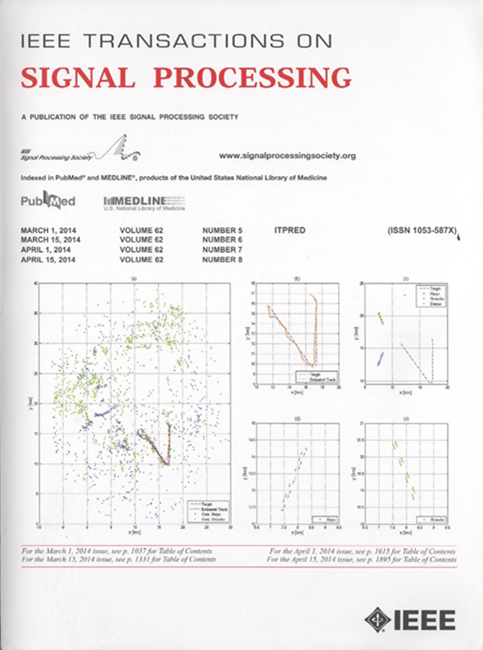一种新的结构图像相似度统计检测器
IF 4.6
2区 工程技术
Q1 ENGINEERING, ELECTRICAL & ELECTRONIC
引用次数: 0
摘要
LinkedIn、Facebook和Instagram等社交网络对日常生活中图像流行度的上升做出了重大贡献,每天都会发布大量的图像。检测图像相似度对于许多应用来说是至关重要的。虽然像LPIPS这样的深度学习方法很流行,但它们往往忽略了图像的结构。另一种方法是使用预训练的模型(例如:$, LeNet-$5$和VGG-$16$)提取特征和使用分类器。然而,深度学习方法需要大量的计算资源,而且它们也会受到不受控制的假警报的影响。本文提出了一种基于假设检验框架的广义似然比检验(GLRT)检测器来识别结构图像对的相似性。所提出的方法最大限度地减少了对大量计算资源的需求,并且可以通过使用阈值来调节假警报。该检测器应用于局部不相似图(LDM),灰度值由统计分布建模。仿真和真实数据的实验结果验证了该方法对结构相似性检测的有效性。此外,对模拟数据进行了简单似然比检验(SLRT)。与深度学习和经典测量方法(如结构相似指数(SSIM)和特征相似指数(FSIM))的比较表明,所提出的检测器在曲线下面积(AUC)方面表现相当或更好,计算时间更少,特别是在结构相似度方面。本文章由计算机程序翻译,如有差异,请以英文原文为准。
New Statistic Detector for Structural Image Similarity
Social networks like LinkedIn, Facebook, and Instagram contribute significantly to the rise of image prevalence in daily life, with numerous images posted in everyday. Detecting image similarity is crucial for many applications. While deep learning methods like Learned Perceptual Image Patch Similarity (LPIPS) are popular, they often overlook image structure. An alternative method involves using pre-trained models ($e.g.$ $5$ $16$
求助全文
通过发布文献求助,成功后即可免费获取论文全文。
去求助
来源期刊

IEEE Transactions on Signal Processing
工程技术-工程:电子与电气
CiteScore
11.20
自引率
9.30%
发文量
310
审稿时长
3.0 months
期刊介绍:
The IEEE Transactions on Signal Processing covers novel theory, algorithms, performance analyses and applications of techniques for the processing, understanding, learning, retrieval, mining, and extraction of information from signals. The term “signal” includes, among others, audio, video, speech, image, communication, geophysical, sonar, radar, medical and musical signals. Examples of topics of interest include, but are not limited to, information processing and the theory and application of filtering, coding, transmitting, estimating, detecting, analyzing, recognizing, synthesizing, recording, and reproducing signals.
 求助内容:
求助内容: 应助结果提醒方式:
应助结果提醒方式:


